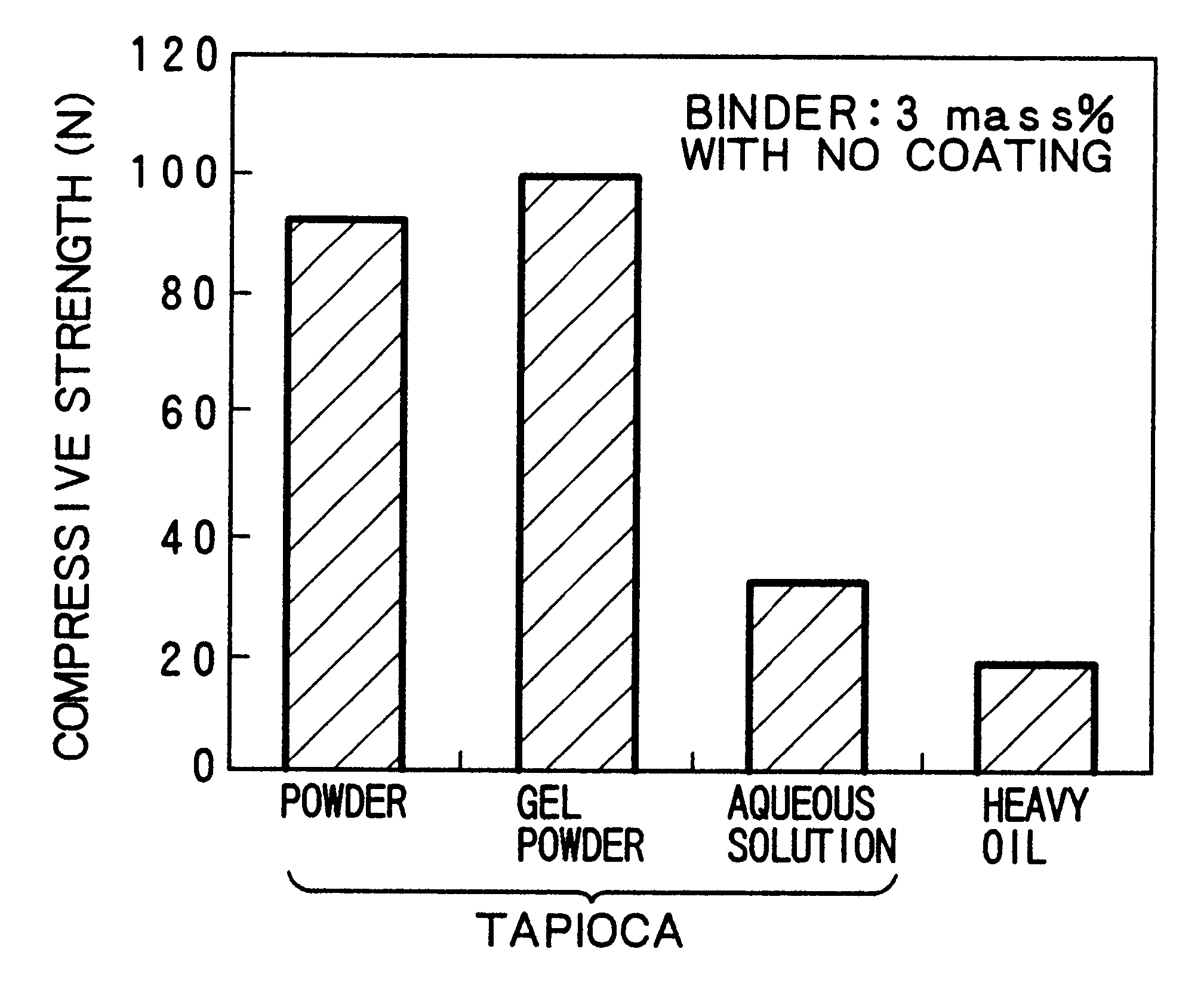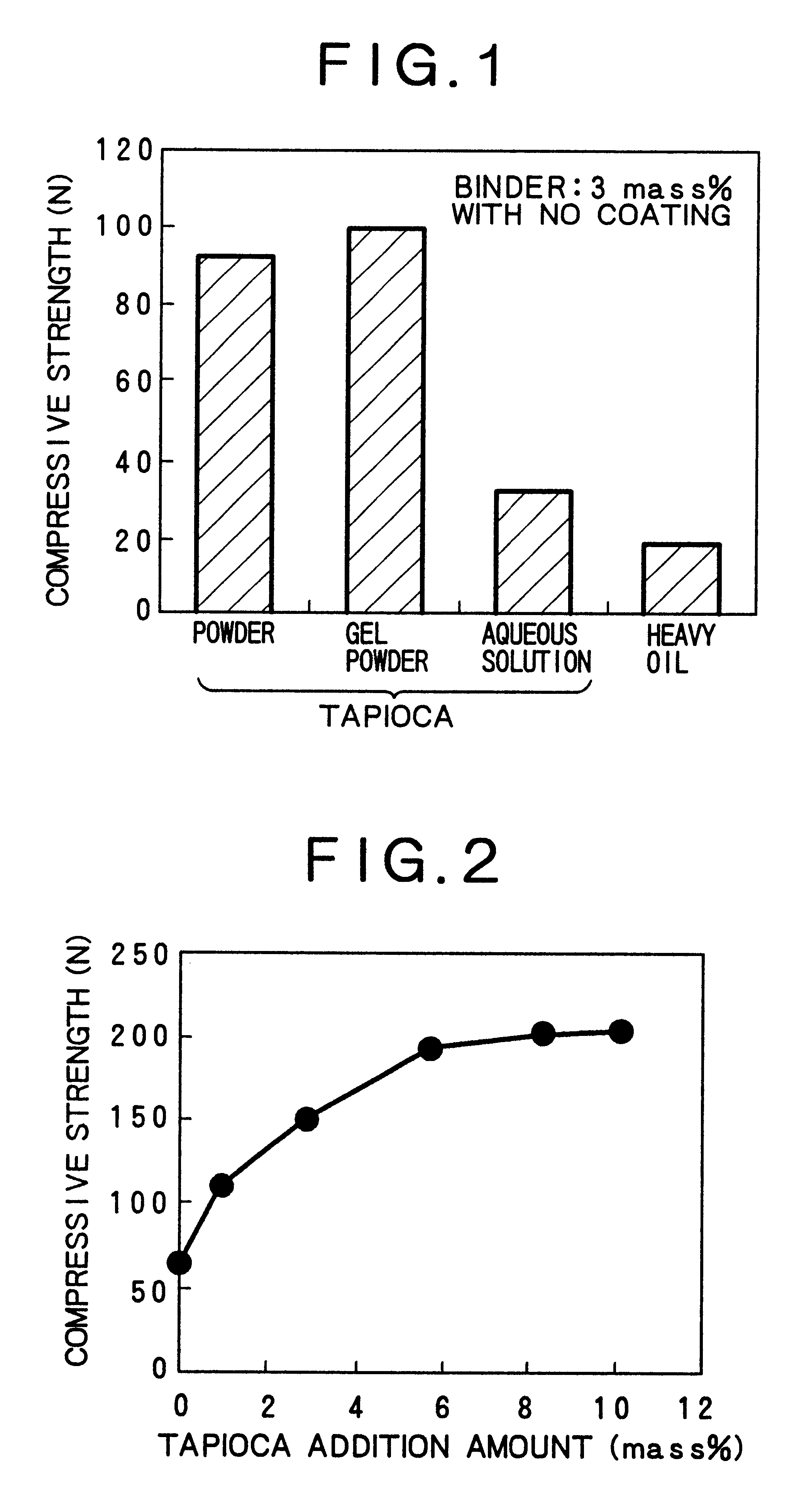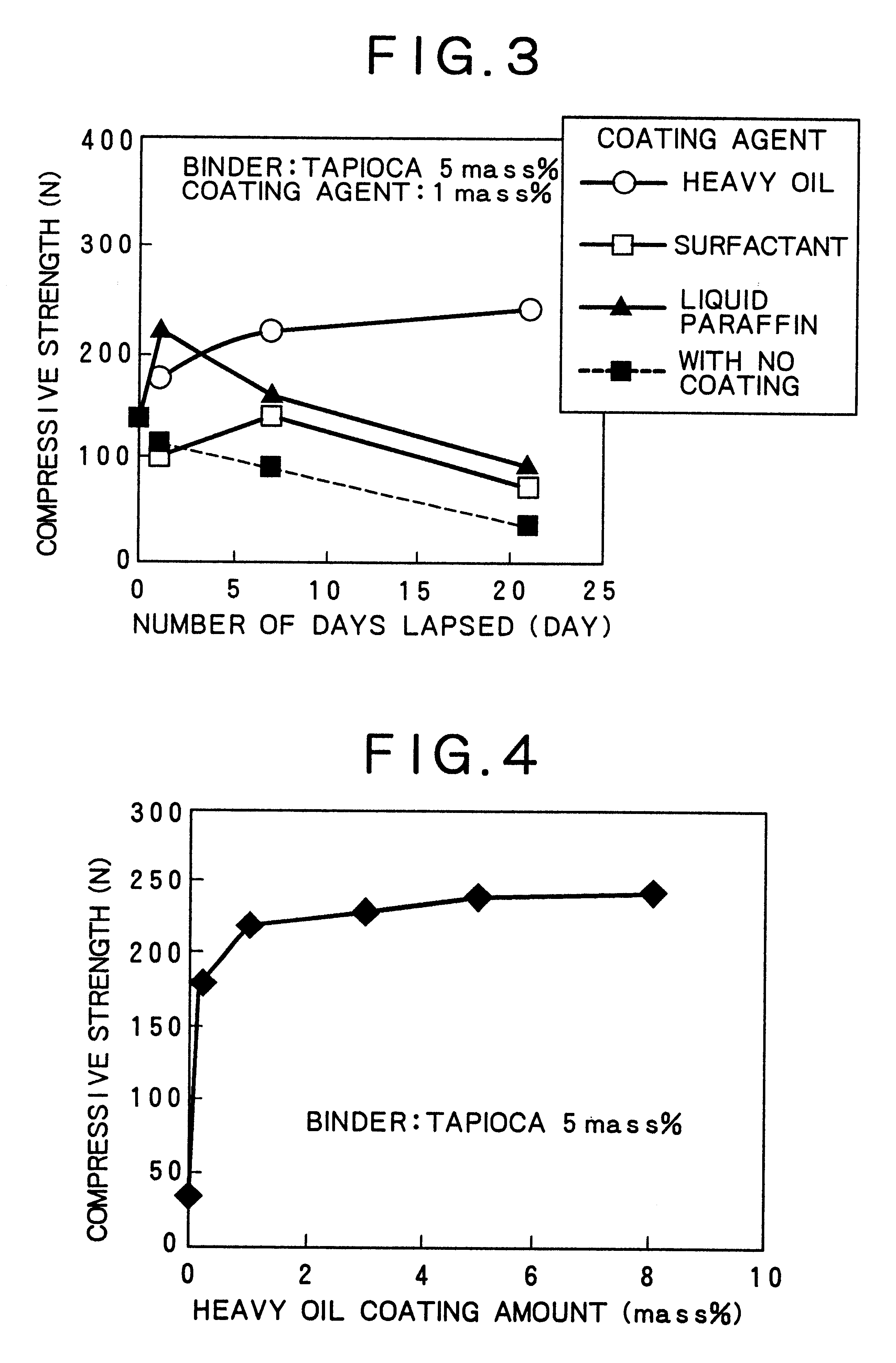Coal briquette and production thereof
a technology of coal briquettes and briquetting, which is applied in the direction of fuels, coke ovens, firelighters, etc., can solve the problems of large fine coal disadvantages, significant problems, and difficulty in handling fine coal if used
- Summary
- Abstract
- Description
- Claims
- Application Information
AI Technical Summary
Benefits of technology
Problems solved by technology
Method used
Image
Examples
example 1
At first, the following experiment was conducted in order to study the effect of the kind of the binder on the compressive strength of the briquette product.
To coal A, (1) powdery tapioca as it is (starch B), (2) gel powder B' formed by gelling powdery tapioca with hot water and then drying and pulverizing the same, (3) 10 mass % aqueous solution B" formed by dissolving powdery tapioca in cold water as the binder, and (4) heavy oil C were added each in 3 mass % based on the mass of the briquette product respectively (in which (3) was added by 3 mass % in a dry powder amount), and mixed for about 3 minutes by a high speed stirring mixing type mixer (manufactured by Eirich Co.) and then prepared into pillow type briquettes (briquette product) each of 38 mm square.times.24 mm thickness by a double roll briquetting machine having a roll diameter of 520 mm and roll width of 120 mm under a pressure of 11.8 MPa. Then, the briquettes were instantly measured without applying coating for the ...
example 2
Then, for studying the effect of the addition amount of starch on the compressive strength of the briquette product, the following experiment was conducted.
Powdery tapioca (starch B) was added to coal A while varying the quantity within a range of 0 to 10 mass % based on the mass of the briquette product and briquettes (briquette products) were manufactured in the same process as in Example 1. Then, the compressive strength was measured without applying coating after about one day for the briquette products. FIG. 2 shows the result as a relation between the addition amount of tapioca (starch) and the compressive strength of the briquette product. As shown in FIG. 2, the compressive strength of the briquette product at about 60 N for the non-addition of the binder (tapioca addition amount=0 mass %) was remarkably increased along with increase in the addition amount of tapioca (starch B) and the compressive strength exceeded 100 N at the addition amount of 1 mass %, the compressive st...
example 3
Then, for studying the effect of the kind of the coating agent on the waterproof, the following experiment was conducted.
A powdery tapioca (starch B) was added as the binder by 5 mass % to coal A based on the mass of the briquette product and briquettes were manufactured by the same method as in Example 1. As the coating agent, heavy oil C, surfactant, and liquid paraffin were added each by 1 mass % to the briquettes based on the mass of the briquette product. Then, as a waterproof test, the briquettes coated with the coating agents and briquettes not coated with the coating agents (briquette products) were placed each by about 50 pieces on a net in a room, to which an operation of spraying water once per one day each time with 1000 ml to wet the surface of the briquettes was repeated. The net was used so that water accumulated by scattering did not result in a state of dipping briquettes in water. Then, the compressive strength of each briquettes was measured at 1, 7, 14 and 21th d...
PUM
| Property | Measurement | Unit |
|---|---|---|
| grain size | aaaaa | aaaaa |
| grain size | aaaaa | aaaaa |
| grain size | aaaaa | aaaaa |
Abstract
Description
Claims
Application Information
 Login to View More
Login to View More - R&D
- Intellectual Property
- Life Sciences
- Materials
- Tech Scout
- Unparalleled Data Quality
- Higher Quality Content
- 60% Fewer Hallucinations
Browse by: Latest US Patents, China's latest patents, Technical Efficacy Thesaurus, Application Domain, Technology Topic, Popular Technical Reports.
© 2025 PatSnap. All rights reserved.Legal|Privacy policy|Modern Slavery Act Transparency Statement|Sitemap|About US| Contact US: help@patsnap.com



